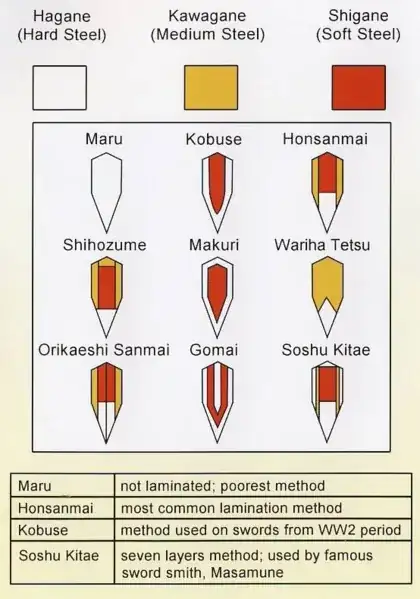According to SamuraiSwords.com, there are two folding steps, in first traverse and longitudinal folding is repeated:
The difference between these two folding procedures lies on that the
small hammer is used to fold in transverse folding while the big
hammer is used in longitudinal folding. Generally, about 12-15 folings
are repeated.
In second (optional one):
another forging step can be added (Age-kitae). Tamahagane is forged
again as a shape of stick once more and cut uniformly about 7.5cm
long. This age-kitae is an optional step and sometimes omitted. A
tight microstrucutre and hada (grain pattern) can be expected after
this step and the uniformity of the carbon content is improved.
Likewise the shita-kitae, tamahagane is heated and folded 7 to 8
times.
Of course this is just process of creating 2 or 3 grades of steel (hard, soft and optionally medium). Then they are combined, making greater total number of layers, how many depends on the style:

As for "1000 folds"...
shita-kitae, is repeated from 8 to as many as 16 times. After 20
foldings, (220, or about a million individual layers), there is too
much diffusion in the carbon content, the steel becomes almost
homogenous in this respect, and the act of folding no longer gives any
benefit to the steel.
(source: Wikipedia, referencing A History of Metallography by Cyril Smith - The MIT Press 1960 Page 53-54)
Also, anything above 25-26 folds would make no sense at all, as by then the layers' thickness would have to be less than radius of iron atoms, which is 126 picometers (= 1.26 × 10-10 meters)
